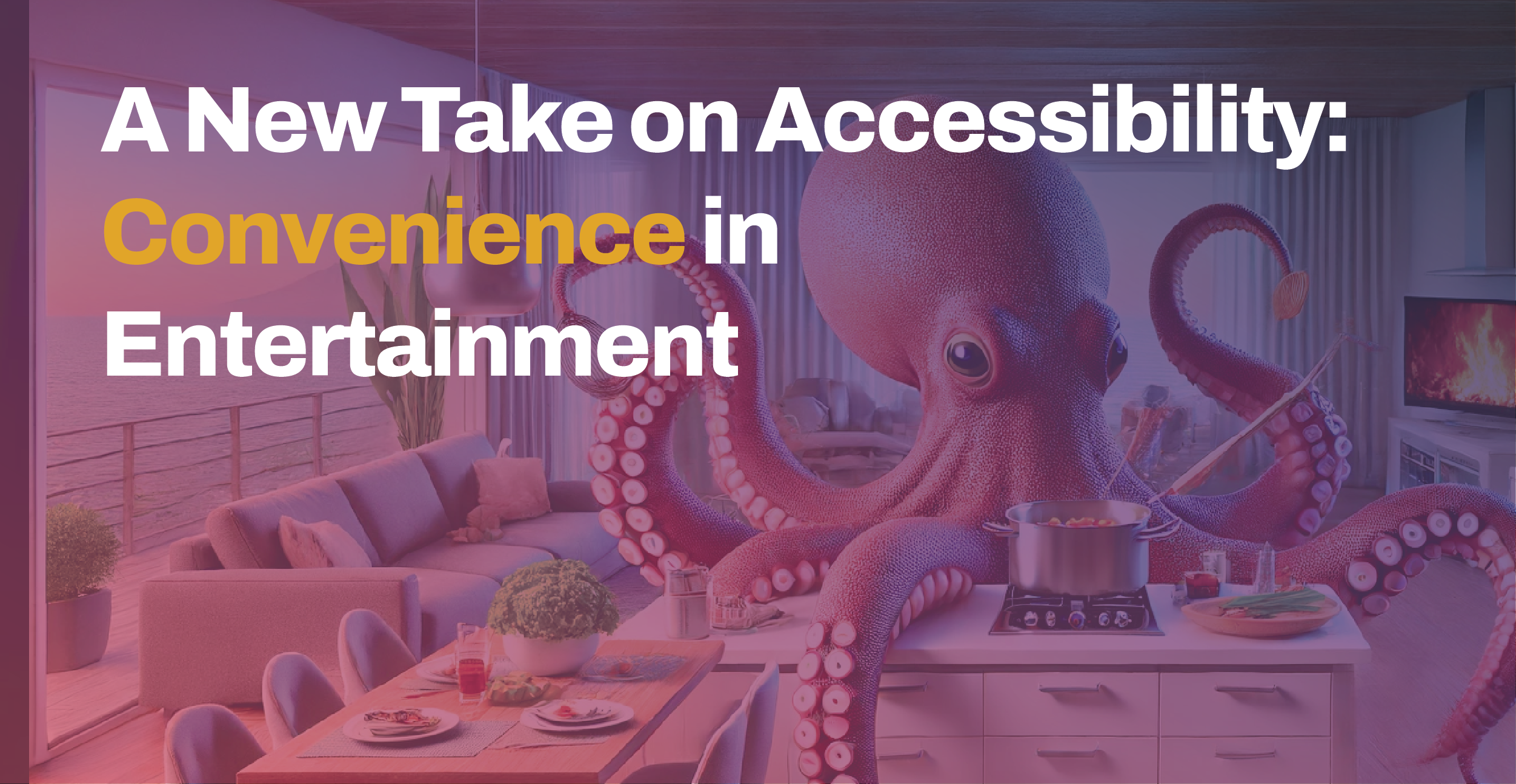Written by: COO Jason Fields
Setting the Scene- Accessibility in Everyday Controls
I have a dog. I don’t have kids. I’ve been married for nearly 22 years, and given the two previous statements, making dinner each night is not usually a time problem. Of course, we order out from time to time, but we love food, and we love to cook. We also love shows. Most nights, while we make dinner, something is on the TV in the background. Anything from news to a bingeworthy old show. Currently, we are working through Modern Family (we’re on S3E6 if you must know).
Not all our dinners are extravagant. Usually, the weekend brings something more involved: Black Tea Smoked Duck, 3-hour braised carrots, Paella perhaps. The weekdays are simpler: tacos, summer rolls with peanut sauce, and sous vide fish make regular appearances.
But simple doesn’t mean clean. We’re constantly washing or wiping our hands to grab the remote to turn on captions, rewind sixty seconds, pause, or turn up the volume. And there must be a better way.
The Voice Assistant Dilemma
You might say, “Jason, just use your voice. Use Alexa. Use Siri. Use Google Assistant.” And that’s right, I could use those things. Except I don’t like them. I have to say their name. I have to repeat the same command over and over again (back, back, back). And since I don’t like them listening to their name all the time, I generally have to push a button. And if I am using my cable box, I absolutely have to press a button. So, not a solution for dirty hands.
The Mobile Device Solution
What I do have in the kitchen, without fail, is a mobile device. Could be my phone, my wife’s phone, or a tablet—they all make an appearance. They all play a role in recipe referencing, real-time internet consulting, and even a video call lifeline from time to time.
What would be nice is being able to use my mobile to control my entertainment. And I can’t be alone in this. In fact, I am not. It turns out that people with disabilities—mobility, neural, and others—often have trouble with remotes and even vocalizing commands.
So what can we do? How about using my face or my head? I can. Well, if I am using Cephable. I get a lot of benefits from using my head and face to control my tech on my desktop. What I need entertainment companies to do is bring that same kind of control to the large format experience I love having, namely, my TV. And why not use the devices that are always within view and in view of me… my phone.
An Open Letter to Entertainment Companies
This is an open letter of a kind, asking companies like Netflix, Peacock, and Paramount+ to consider accessibility differently. Accessibility has a long history of being associated with disability. I won’t knock that. But it is only one view.
The definition of accessibility is not only the quality of being able to be entered or used by everyone, including people with disabilities. It is also the fact of being reached or obtained easily.
It’s this latter definition that I think is an easier conversation with businesses and owners of digital experience. When brands are thinking through and documenting the customer journey, all the touchpoints of their customers, they consider the context of the touchpoint. It’s time to elevate that thinking and solve the newer situations in consideration of what technology can do.
Having a TV in the kitchen isn’t new. Streaming on-demand content with a choice of an ungodly number of ‘channels’ is. Changing the station isn’t new. Having cameras, microphones, and accelerometers available is.
Widening the Interface of Media
Being passionate about A11y, I’d love for all companies to have people with disabilities in mind when they design and develop. The general consumer is less concerned. In the end, I want results and options for everyone.
It’s time to widen the interface of media and bring modern controls to the experience. It isn’t about abandoning what has worked for decades; it is about supplementing them. Offering options and fortifying the digital experience of control.
Get In Touch
Our team can help you learn more about integrating with Cephable.

